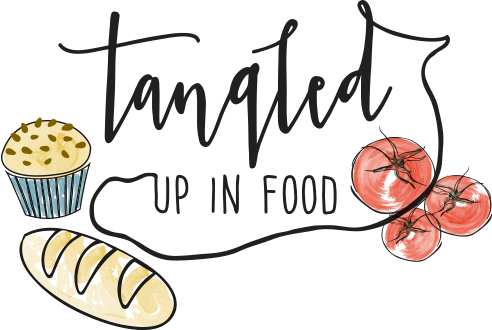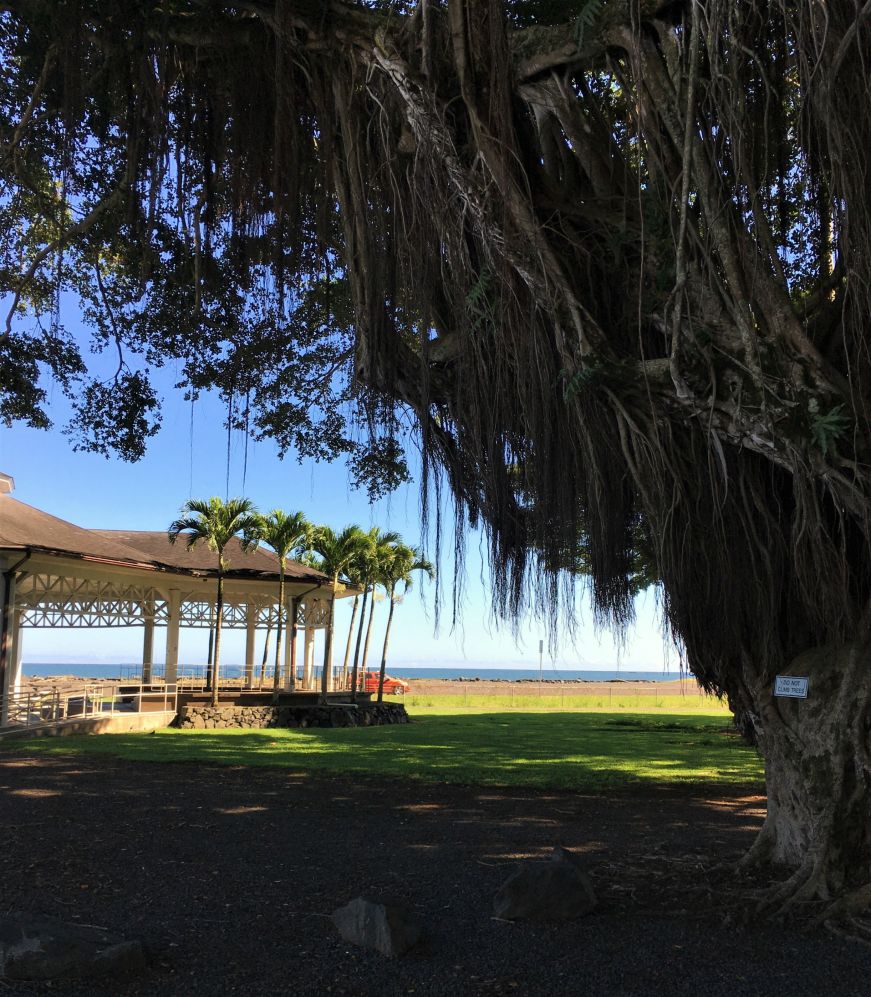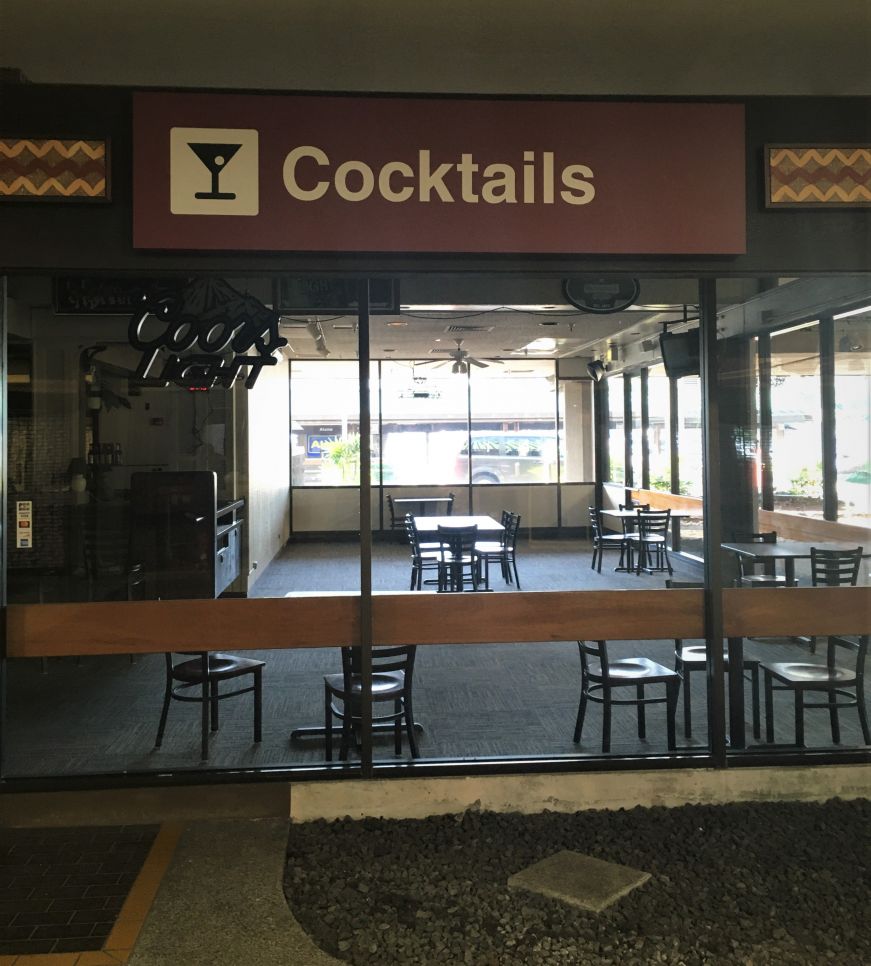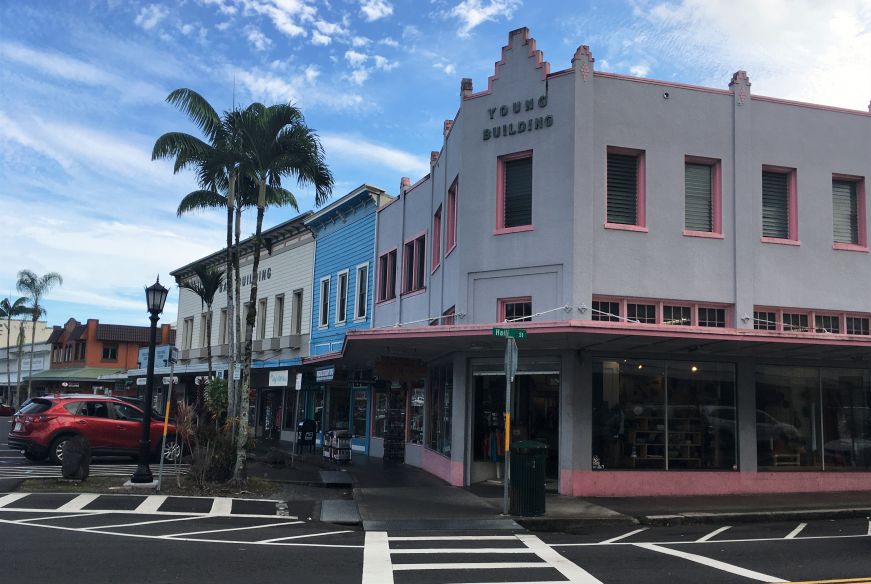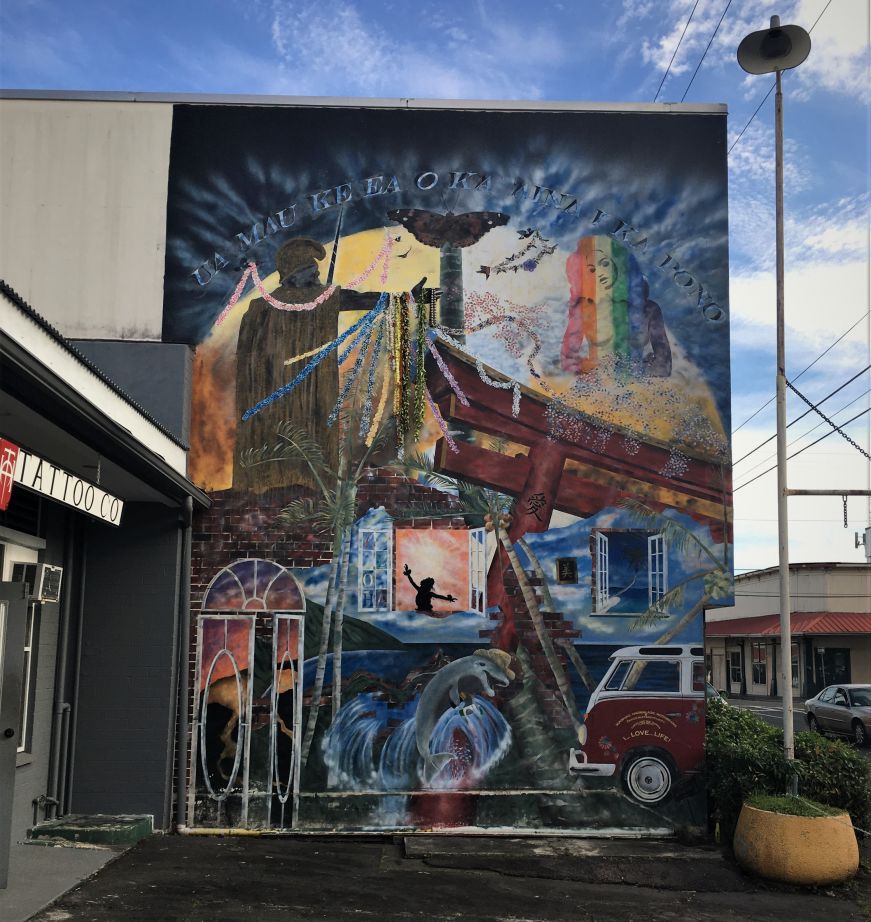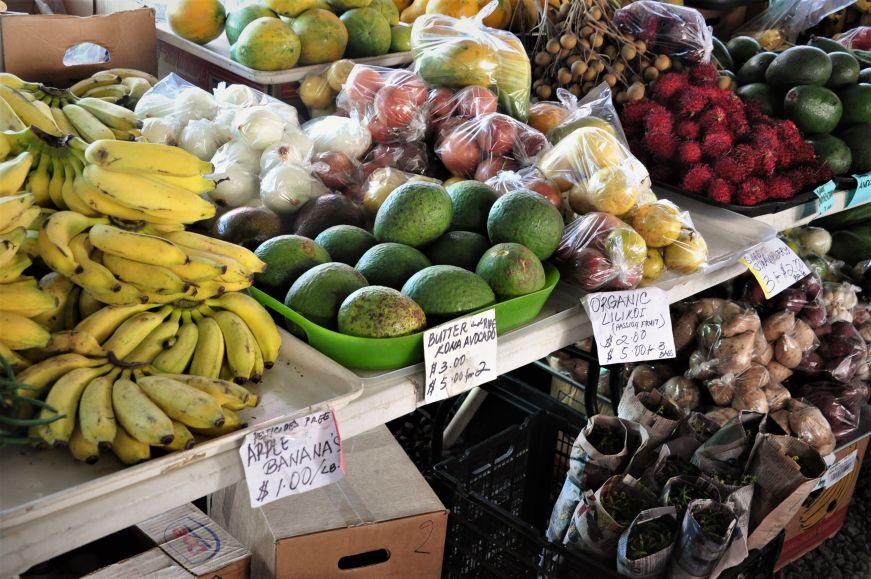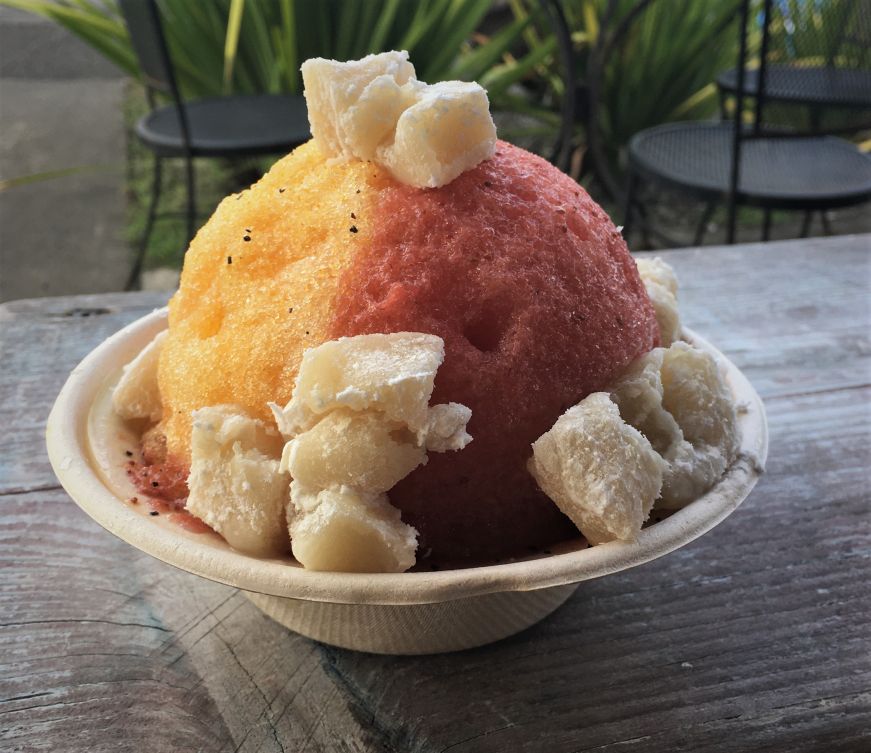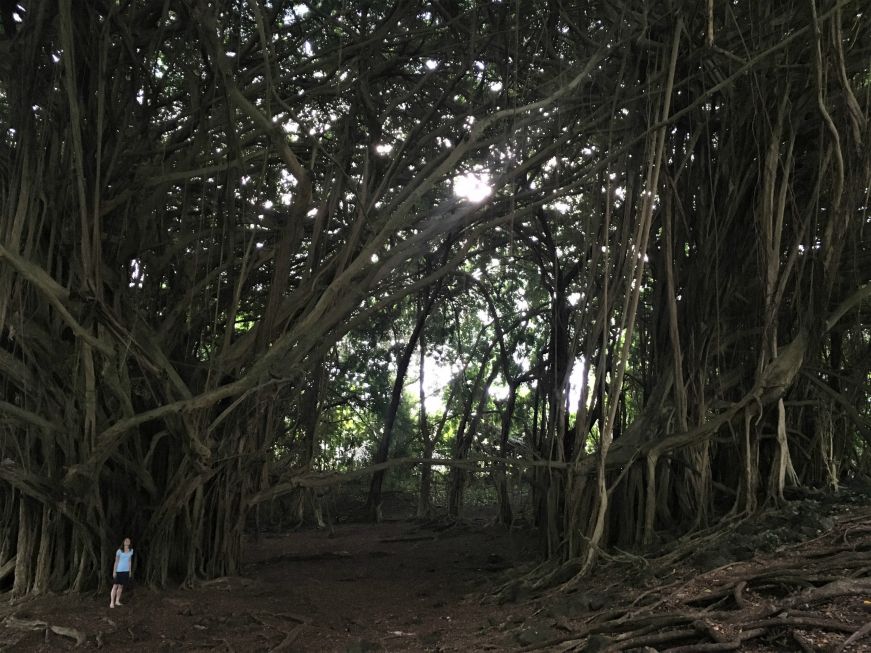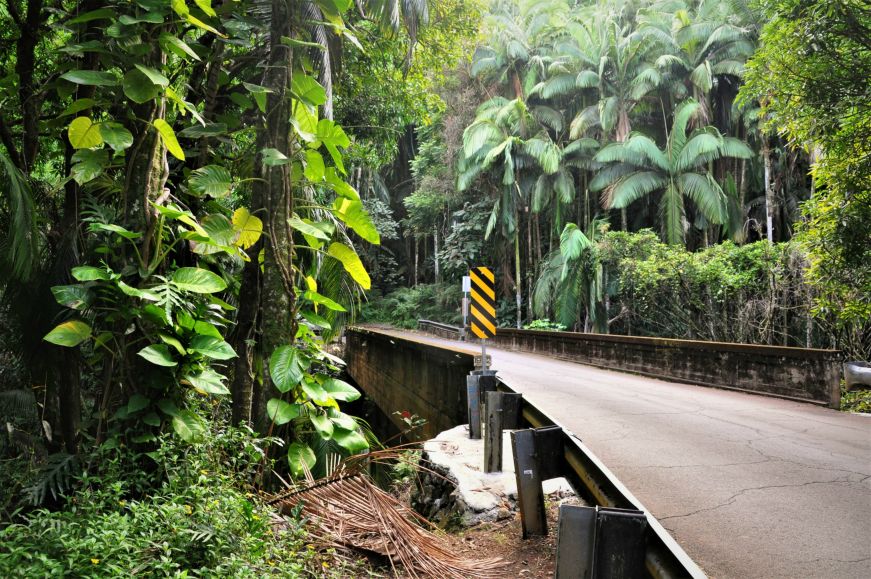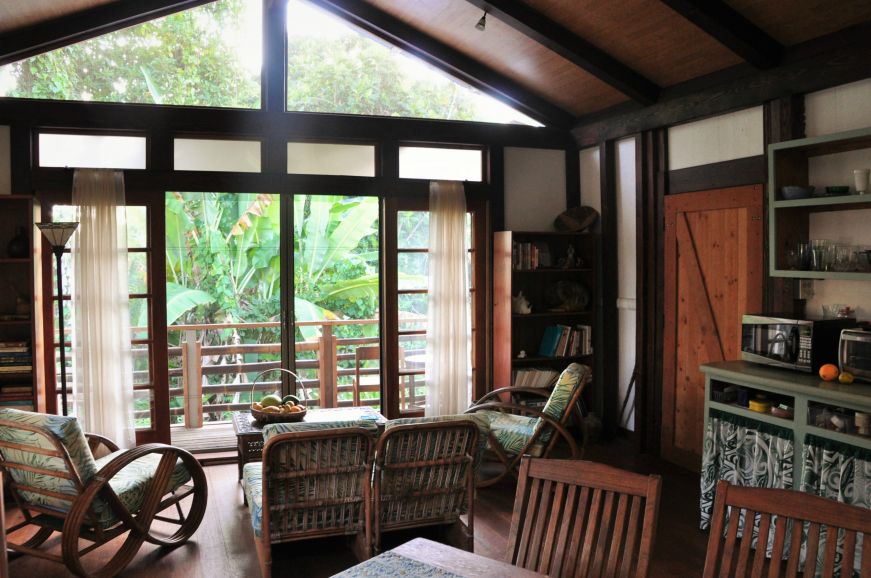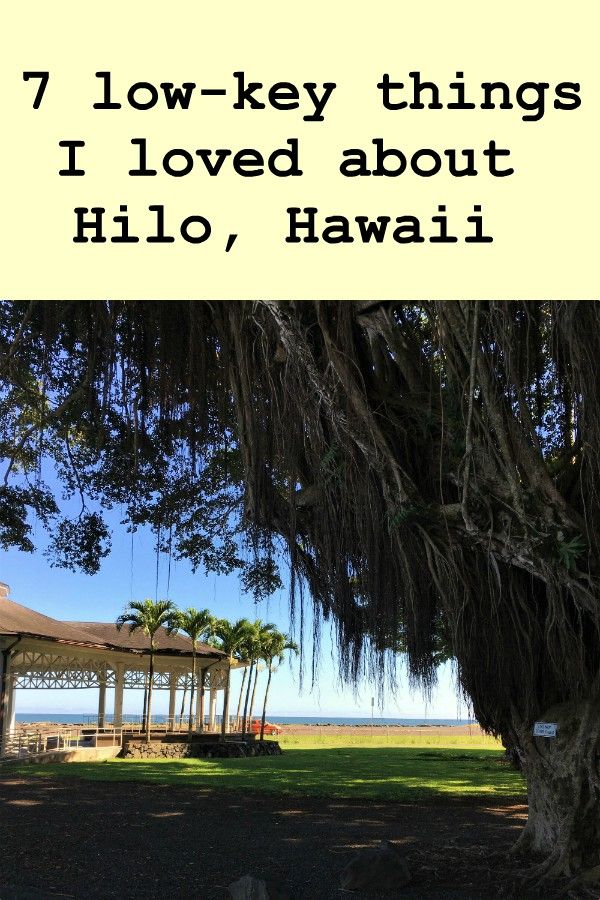For years, my approach to travel was very checklist-based: see the thing, eat the food, on to the next town. Mike and I often stayed in a different place each night, ate every meal out, and had a precise schedule of each day's activities.
But as I touched on in my post about my spontaneous trip to San Francisco, that approach eventually stopped working for me. This year, I've been focusing on making my life less about checklists and more about joy, and I tried to keep that in mind when planning our trip to Hawaii. On the Big Island, we spent five nights and four days in Hilo, which according to a fellow tourist we overheard on a hike "doesn't have much going on."
That's not strictly true—nearby attractions include 'Akaka Falls State Park and the Hawaii Tropical Botanical Garden, and Hawai'i Volcanoes National Park is about an hour's drive away. However, Hilo is an understated destination. Most of the Big Island's resorts are in Kailua-Kona, a drier, sunnier town on the western side of the island. In contrast, Hilo gets about 200 inches of rain per year (miraculously, it only rained for a few hours during our entire visit), and while there are plenty of tourists and a cruise ship dock, it maintains a more laid-back, local feel.
In short, Hilo was exactly what I was looking for.
Although we did visit some of the headliner sights (and I definitely recommend 'Akaka Falls and Volcanoes National Park), what I loved most about Hilo were the smaller, more everyday attractions: the farmers market, the shave ice stand downtown, the banyan trees. In no particular order, here are the seven low key-things I loved most about Hilo.
1. The retro outdoor airport
U.S. airports tend to have a generic sameness: a neutral color palate, fast food restaurants, newsstands with overpriced bags of trail mix. You can't really tell if you're in Minneapolis or Phoenix, New York or Los Angeles.
But Hilo International Airport couldn't be anywhere but Hawaii. Many portions of the facility are open-air, including the baggage claim, where are palm trees grow next to conveyor belts of circling luggage. Instead of being branded, the restaurants and shops have generic names like an airport play set from my childhood—for example, the bar has a giant sign that says "Cocktails" in circa 1980s font. In lieu of uncomfortable chairs with hard armrests, there are wicker couches with plump cushions covered with tropical-themed fabric.
From the moment you arrive until it's time to leave, Hilo's airport is a reminder to slow down and appreciate that you're in a unique place, very far from the mainland.
2. The historic downtown
I'm a history buff who enjoys a historic downtown wherever I am in the world. I appreciate the walkability, the interesting architecture, and the local businesses. However, historic downtowns often have a self-conscious "this is for the tourists" feel. They're still enjoyable, but there's also a certain sameness to the boutiques, galleries, ice cream shops, and Instagrammable murals.
Hilo's historic downtown does have plenty of souvenir shops and a few restaurants that are definitely geared towards the cruise ship crowd. But mostly, it feels like a place for the locals that tourists also happen to frequent. There's a restaurant supply store, a gym, and tattoo shops. We stopped by Papa'a Palaoa Bakery, where the shelves were mostly filled with bread sold by the loaf and bags of rolls, although they were happy to sell us a couple of pieces of Tahitian lime pie. They even tracked down forks so that we could enjoy our pie at the sole bistro table on the sidewalk outside.
Downtown Hilo's Art Deco buildings and pastel wooden storefronts have a lived-in, well-loved feel, as though they've been preserved out of necessity rather than for appearance's sake. A few notable buildings include the Hilo Palace Theater, which first opened in 1925, and the Pacific Tsunami Museum, housed in a repurposed bank that dates to 1930.
It's fun to walk around and appreciate the various murals, many of which reflect Hawaiian history and culture. Other places we enjoyed in downtown Hilo include Wild heArtist Bohemian Boutique and Gallery (heavy on the woo-woo, but neat postcards and stickers designed by local artists) and Puna Chocolate Company & Cafe, which sells locally grown chocolate, locally crafted gifts, and cups of sipping chocolate with a gritty cocoa intensity.
3. The Hilo Farmers Market
The Hilo Farmers Market is open daily, with "big market days" on Wednesday and Saturday. On a regular day, we found about a dozen vendors selling locally grown fruit and vegetables—some of our favorite finds were apple bananas, a smaller, more flavorful species than the Cavendish variety sold in grocery stores; avocados; strawberry papayas; a pineapple; and lilikoi (passion fruit). On Saturday, in addition to produce, there were prepared food vendors selling baked goods (I bought an amazing piece of butter mochi and Mike scored a loaf of banana bread); savory snacks like lumpia, spring rolls, and Spam musubi; and an assortment of bento boxes with rice, meat, and vegetables. On big market days, there's also a separate annex across the street from the main market with booths selling locally made crafts, textiles, art, jewelry, and specialty foods like balsamic vinegar.
The Hilo Farmers Market is truly a feast for the senses, and I especially appreciated the opportunity to buy varieties of ripe tropical produce I can't get at home in Minnesota—I never realized how delicious bananas and avocados could taste. The big market on Saturday was also a good place to buy some unique souvenirs (yes, a bottle of lilikoi balsamic vinegar found its way into our suitcase) and food for a picnic lunch.
4. Kula Shave Ice
Just across the street from the Hilo Farmers Market is a small outdoor food court that's home to Kula Shave Ice. I confess to being a bit of a snob when it comes to shave ice—I prefer syrups made with fruit instead of artificial flavoring, and the ice cream should be premium quality.
Kula Shave Ice is my kind of place. Not only do they offer housemade syrups, they use local, organic fruit to make them, including guava, Tahitian lime, soursop, mango, and lilikoi. Other flavors include include coconut matcha and cacao. Then there are the toppings: fresh papaya, homemade lilikoi butter, homemade chocolate shell, and more. They also offer fillings including housemade ice cream and fresh poi.
I ate a lot of shave ice during my time in Hawaii, and my favorite was my build-your-own creation at Kula Shave Ice: strawberry and lilikoi syrup, homemade mochi, and macadamia ice cream—the mochi were delightfully bouncy, and the macadamia ice cream had a mellow nuttiness that perfectly complimented the fruit flavors.
Kula Shave Ice also has a some vegan substitutions that you won't find at other shave ice shops, such as a snow cap made with condensed coconut milk and housemade coconut gelato. They also sell acai bowls, smoothies, and a variety of cold brew coffee and tea drinks.
5. The banyan trees
First of all, banyan trees aren't native to Hawaii—they hail from Asia and Oceania and were first planted in Hawaii in the 1800s. Another thing to keep in mind is that a banyan doesn't grow like a typical tree: it starts when a seed falls on the branch of another tree or onto a building. The roots grow downwards and eventually envelop the host tree or structure. Often, a banyan tree looks like a whole grove of trees, but all the trunks are actually interconnected.
You can find banyan trees across Hawaii (there's an especially famous one in downtown Lahaina on Maui), but there seem to be a lot more of them in Hilo than other parts of the state I've visited. In downtown Hilo, Banyan Drive is home to about 50 banyan trees planted by celebrities including President Franklin D. Roosevelt, Amelia Earhart, and Babe Ruth. We spotted banyan trees in parks and in front of schools, on a hike at 'Akaka Falls State Park, and shading busy city streets.
However, the most impressive banyan in Hilo is at Wailuku River State Park, near Rainbow Falls. I couldn't find any estimates as to how large it is, but it dwarfs the one in Lahaina, which has a canopy that spreads out over about 0.75 acres. We visited around 5:00 p.m. and had it all to ourselves. The roof-like canopy and meditative stillness made it feel like a world apart, where something magical could happen.
Banyan trees are considered sacred in India, and visiting the banyan tree at Rainbow Falls helped me understand why. It's a transcendent place.
6. The Old Mamalahoa Highway
The Old Mamalahoa Highway is reminiscent of Maui's famous Road to Hana, in that the journey down the rural highway is the destination. If you head north from Hilo on Route 19, just after mile marker 7 you'll see a large blue highway sign on the right that says "Scenic Route." Turn right, and you'll be treated to a four-mile drive through a tropical forest on a narrow, winding road. Roll down the windows and breathe in the humid air. Stop at Onomea Bay for a short hike along the ocean on a paved (albeit quite steep) trail. Just past the hiking trail is the Hawaii Tropical Botanical Garden. We checked it out on a previous trip, and while it's quite lovely the $25 per person admission fee was a bit too steep to justify a return visit.
Another way to experience the Old Mamalahoa Highway is on foot. One morning I went for a run on the highway, and despite the hilly terrain and humidity it was one of my all-time favorite runs. If you decide to go for a run or walk along the highway, be mindful of traffic since the shoulder is minimal or non-existent.
7. Our one-of-a-kind Airbnb
Hilo has a wide range of lodging options, from hotels and bed and breakfasts to hostels and Airbnb apartments. We stayed at a truly unique Airbnb: the Shrine at Pua's Patch, a guesthouse housed in a former Buddhist shrine. Located in Papaikou, it's about a 10-minute drive from downtown Hilo. There's a balcony looking out over the dense tropical greenery, the shower is massive and handicap accessible, the kitchen is well-equipped, and Pua will shower you with tropical fruit from her backyard and fresh eggs from the resident chicken flock.
Yes, there's a rooster that starts crowing at about 3:00 a.m. (and on one unfortunate occasion, at midnight). The building is old and in no way airtight, so you might spot a gecko wandering down the wall. The driveway is steep, and the route from Hilo features one-lane bridges and sharp curves.
But we didn't travel thousands of miles to Hawaii to recreate our suburban, rooster-less existence in Minnesota. The Shrine at Pua's Patch sums up what I love the most about Hilo: it's lush and tropical, a little bit rough around the edges, and very far from home.
More posts about Hawaii
- A tourist's guide to grocery shopping in Hawaii
- A guide to Hawaiian shave ice
- Kaua'i: Favorite places to eat, see, and stay
- Maui: Favorite places to eat, see, and stay
- 14 Best Stops on the Road to Hana
- Is it worth it to spend the night in Hāna, Maui?
If you enjoyed this post, pin it!
